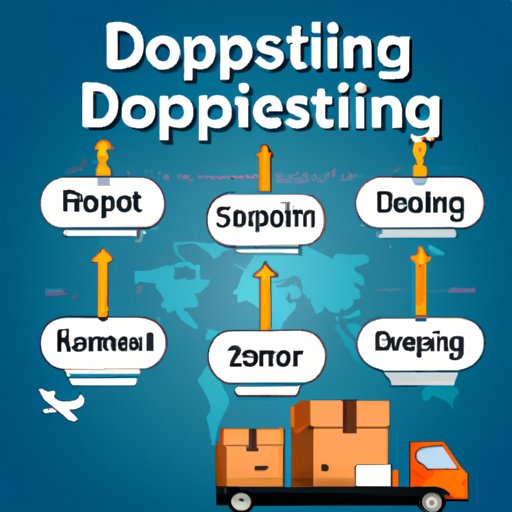Introduction
Dropshipping is an online business model that allows entrepreneurs to sell products without ever having to store or ship them. Instead, the seller works with a third party supplier who handles all the logistics and delivery of the product. It’s a great way to get started in ecommerce without any upfront costs and minimal risk. But the question remains: can you automate dropshipping?
The answer is yes. Automation is becoming increasingly popular among dropshippers as it offers many benefits, including saving time and money, reducing errors, and streamlining processes. In this article, we’ll explore how to set up and utilize automation for dropshipping, the pros and cons of automating dropshipping, what you need to know before automating dropshipping, and the top tools to automate your dropshipping business.

How to Set Up and Utilize Automation for Dropshipping
Before diving into automation, it’s important to understand the basics. Automation is the process of using technology to perform tasks that would otherwise be done manually. It can be used to automate almost any process, from customer service to inventory management. For dropshipping, automation can be used to streamline the entire process, from ordering and fulfillment to tracking and shipping.
There are several different ways to set up automated dropshipping. The most popular method is to use an ecommerce platform like Shopify or BigCommerce, which offer built-in automation features such as order processing, inventory tracking, and automated emails. You can also find third-party software solutions that offer more advanced features such as automated product listing, automatic discounts, and automated order fulfillment.
When setting up automated dropshipping, it’s important to keep in mind a few tips. First, make sure you have a clear understanding of your target market and what they want from your business. Second, use data-driven decision making to determine the best automation strategy for your business. Third, test out different automation tools to find the one that works best for you. Finally, don’t forget to monitor and optimize your automated dropshipping process regularly.

The Pros and Cons of Automating Dropshipping
Automation has many benefits when it comes to dropshipping. For one, it saves time and money by eliminating manual processes and allowing you to focus on other areas of your business. It also reduces errors, as automated systems are less prone to human error than manual processes. Additionally, automation makes it easier to scale your business, as it allows you to quickly add new products and services to your store.
However, there are some challenges associated with automation. For example, automated systems can be expensive to set up and maintain. Additionally, they require a certain level of technical knowledge to operate effectively. Lastly, automation can lead to a loss of control over certain aspects of your business, as decisions are made by the automated system rather than by you.
What You Need to Know Before Automating Dropshipping
Before automating dropshipping, it’s important to do your research. Start by researching the right tools for your business. Look for tools that offer the features you need at a price you can afford. Next, determine the cost of automation. Depending on the size of your business, automation can be expensive. Finally, understand the risks and rewards of automation. While automation can save you time and money, it can also lead to a loss of control over certain aspects of your business.

Top Tools to Automate Your Dropshipping Business
Once you’ve done your research and determined the cost of automation, it’s time to start looking for the right tools to automate your dropshipping business. There are a number of popular software solutions available, such as Oberlo, ShipStation, and ShippingEasy. Each one offers different features and pricing plans, so it’s important to compare them to find the one that best meets your needs.
A Step-by-Step Guide to Automating Dropshipping
Once you’ve chosen the right tools for your business, it’s time to start setting up an automated dropshipping system. Here’s a step-by-step guide to help you get started:
1. Set up your ecommerce platform. This includes creating product listings, setting up payment methods, and integrating with third-party software solutions.
2. Connect your ecommerce platform to your dropshipping supplier. This will allow you to import products, manage orders, and track shipments.
3. Integrate your automation tools. This includes connecting your email marketing software, inventory management system, and accounting software.
4. Test out your system. Make sure everything is working properly by testing out the different parts of your system.
5. Monitor and optimize your system. Regularly check your system for errors and adjust your settings if needed.
Conclusion
Automating dropshipping can be a great way to save time and money while streamlining your business processes. However, it’s important to research the right tools for your business, understand the risks and rewards of automation, and set up a system that works for you. With the right tools and a bit of effort, you can create an automated dropshipping system that will help you run your business more efficiently.
(Note: Is this article not meeting your expectations? Do you have knowledge or insights to share? Unlock new opportunities and expand your reach by joining our authors team. Click Registration to join us and share your expertise with our readers.)
